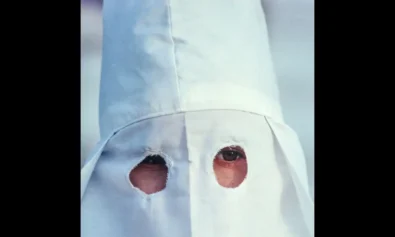
Laveau may be known as the “Voodoo Queen,” but she was also a source of strength for the entire Black community in New Orleans both during and after slavery, according to traditional folklore.
While court documents suggest Laveau was a free woman of color who practiced voodoo, little else is known about her true identity.
Scholars admit that many of the details surrounding her appearance come from old tales or general depictions of what a beautiful woman may have looked like at the time.
That’s exactly what makes the new shrine so intriguing.
Most of the portraits and other depictions of Laveau portray her as a fair-skinned woman. The new shrine, however, will feature her with a darker skin complexion.
“The 9-foot shrine, painted a darker complexion than the image of her that dominates most tourist pamphlets and postcards, is expected to serve as an alternative site to commune with Laveau now that visitors not claiming to be her descendants may visit New Orleans’ St. Louis Cemetery No. 1 only with a tour guide after vandals repeatedly defaced her tomb,” Al Jazeera reported. “The rule went to effect this month, at the request of the Roman Catholic Archdiocese of New Orleans.”
With lore largely emphasizing the fact that Laveau was a powerful, beautiful woman, the depiction of her as a dark-skinned woman is a clear ode to the beauty of dark skin, especially since Laveau lived during a time when darker skin wasn’t appreciated.
New Orleans was one of many Southern cities that used a “paper bag test” before the 1960s to decide whether or not someone was too dark to enjoy certain luxuries that were extended to Black people with fairer skin.
The new depiction of the Voodoo Queen will now add to an already extensive list of ways the community remembers Laveau. Her image as a beautiful dark-skinned woman also got a significant boost when the gorgeous Angela Bassett played her in the popular TV show, “American Horror Story.”
“Even as early as the [late] 19th century, when you ask people about Marie Laveau, they describe her as tall and fair-skinned with curly hair. She’s black, but she’s not black. She’s Creole,” Kodi Roberts, an African-American history professor at Louisiana State University, told Al Jazeera. “But then you get other people who still practice voodoo in the 20th century saying they prayed with her or danced with her. They say she was dark and short and fat. That conflict goes back as far as I can tell.”
Then there are documents from an oral history project in Louisiana that referred to her as a “quadroon,” meaning she was of mixed heritage and mostly white.
Regardless of these documents and tales, however, Sallie Ann Glassman says historical accuracy isn’t what inspired the light-skinned depiction of the Voodoo Queen.
Glassman, the priestess of the New Orleans Healing Center where the ceremony for the shrine will be held, said most artists’ depictions were simply based on that particular artist’s idea of beauty.
“There were some eyewitness accounts, but no images of her,” Glassman added, according to Al Jazeera.
So her image was up to the imagination — largely determined by current standards of beauty.
In that sense, it’s only fitting that a dark-skinned depiction of the beloved New Orleans figure is finally unveiled.



